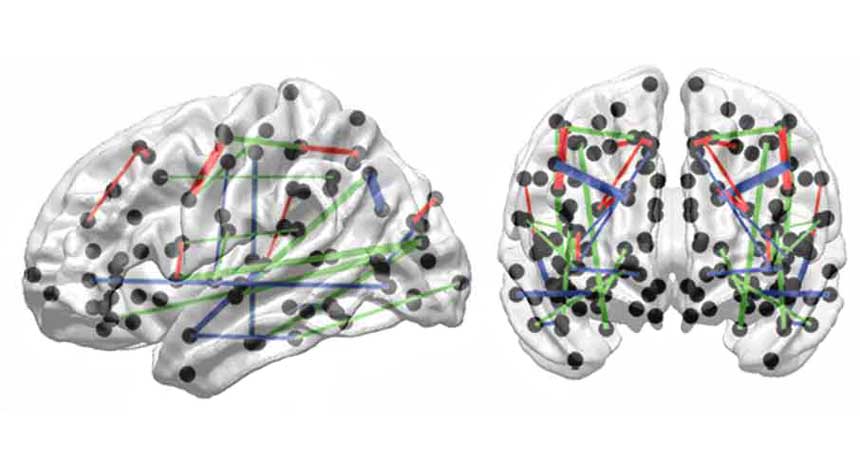White matter scaffold offers new view of the brain
Neural map may explain why some injuries are worse than others

BRAIN TRUST These white matter tracts (indicated by red, blue and green lines) in the brain are particularly vulnerable to injury, a new study suggests.
A. Irimia and J. Van Horn/Frontiers in Human Neuroscience 2014






